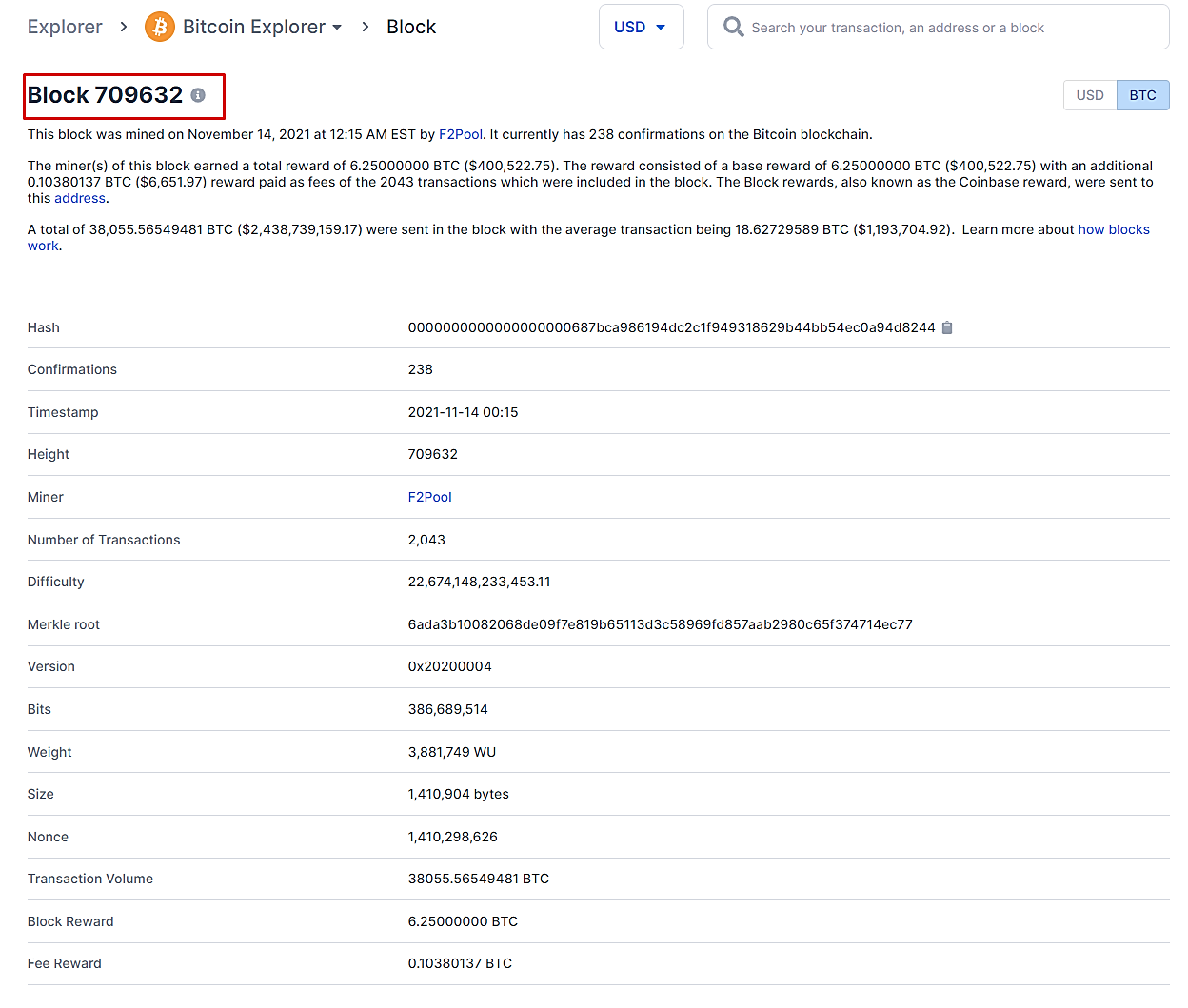The latest Bitcoin update – called Taproot – has hit the streets. And no matter where you look, just about everyone involved with crypto and Bitcoin is abuzz about what this upgrade means for Bitcoin today and down the road.
So, today we’re going to take a behind-the-scenes look at what Taproot really is and what it means to investors. Then, we’ll kick the tires and see if it stacks up to all the hype.
What Is Taproot?
On November 14, the Bitcoin network activated the Taproot upgrade to Bitcoin’s software deployed around the network. The upgrade officially hit the block at block 709,632 and is the first major update since 2017. The upgrade should increase transaction privacy and efficiency.
So far, the upgrade looks like it’s running smoothly. But that hasn’t always been the case with BTC upgrades in the past. Here’s what I mean.
In 2017, the Segregated Witness (SegWit) upgrade ushered in Bitcoin’s Lightning Network – a Bitcoin layered technology that manages payments faster and for less money than Bitcoin. The upgrade also improved transaction efficiency and scalability of the Bitcoin network, two pain points that BTC had to endure.
But the 2017 upgrade – which was referred to as the last Bitcoin “civil war” – was met with contentious ideological resistance. No one could decide how to fix the network’s speed, efficiency, and scalability problems. Finally, things got so bad it almost tore the network apart.
Not so with the Taproot upgrade. A whopping 90% of network participating nodes have committed to adopting the upgrade. In fact, they’ve been on board since June 12, long before the upgrade went live. As a result, miners who refuse to upgrade will no longer successfully mine on the network.
At the heart of the upgrade are network innovations known as “Schnorr signatures.” With these signatures, the Taproot upgrade will allow Bitcoin to get into the smart contract business and compete with Ethereum (ETH).
But just because the upgrade has been met with widespread (planned) activation among nodes, that doesn’t mean we’ll be seeing the fruits of the upgrade anytime soon. That’s because the tools and programs that will take advantage of Taproot’s new bells and whistles still have to be designed, developed, and deployed. Plus, it will take a while for wallets to adapt to the new upgrade.
What The Heck Are Schnorr Signatures?
In order to make transactions flow around the Bitcoin blockchain, there needs to be a way to identify people sending and receiving transactions. This is done through digital signatures. In the past, these digital signatures on the Bitcoin blockchain used a cryptographic scheme called ECDSA (Elliptic Curve Digital Signature Algorithm).
While the ECDSA system works fine, for the most part, it had some drawbacks, especially if you needed numerous digital signatures, like for smart contracts. Plus, ECDSA needed multiple public keys and signatures, which could bog down the Bitcoin transaction system. As a result, this wasn’t ideal for computational and storage reasons.
With Schnorr signatures, there’s no need to have multiple public keys and signatures. Instead of everyone having to sign separately, the parties involved can simply combine their signatures into a single public key, called Key Aggregation. Then the parties use their own private keys and this one public key to consummate the transaction.
With Schnorr signatures, the taproot upgrade means the Bitcoin network will move faster, more efficiently, and with greater privacy and security.
Bitcoin’s In The Smart Contract Business!
As you can see, with Schnorr signatures – and other developments like Merkelized Abstract Syntax Tree (MAST) and Tapscript -- the developers behind the Taproot upgrade knew they needed to make doing things with lots of different people on the Bitcoin network easier. And they also knew that meant that Bitcoin could get into the smart contract business.
As we’ve said here before, smart contracts can be used to conduct just about any type of business transaction on the blockchain. From real estate transactions to finance (decentralized finance or DeFi) to buying assets, if you can write it down, it can become a smart contract on the blockchain.
Smart contracts are the leading edge of innovation on the blockchain. Building applications that utilize those capabilities are already transforming just about every aspect of our lives. And with the Taproot upgrade, Bitcoin now gets into the game.
Will Bitcoin be the first Ethereum (ETH) killer? Doubtful. Ethereum is designed for smart contracts and is way ahead on the development front. Bitcoin will also take time to get its smart contract use cases up and running.
What the Upgrade Means For Investors
One of the biggest knocks on Bitcoin– by investors and critics alike – has been its lack of innovation and development. And there’s no doubt that the Taproot upgrade – which took four years to come to market – didn’t exactly happen with blazing speed.
But to me, Bitcoin’s developers want to make sure they get any upgrades right the first time and without a lot of in-fighting. With Taproot, it looks like they’ve succeeded.
Is that a plus for investors? You bet. It means that Bitcoin isn’t going to take even the smallest step without testing, retesting, and more testing. And while that may make for a glacial rate of development, it also makes Bitcoin stronger and more secure. And for investors, the focus should be on the long-term stability and efficiency of the Bitcoin network. Without it, users and investors alike will take their crypto dollars elsewhere.
Wayne Burritt
INO.com Contributor
Disclosure: This contributor may own cryptocurrencies mentioned in this article. This article is the opinion of the contributor themselves. The above is a matter of opinion provided for general information purposes only and is not intended as investment advice. This contributor is not receiving compensation (other than from INO.com) for their opinion.

